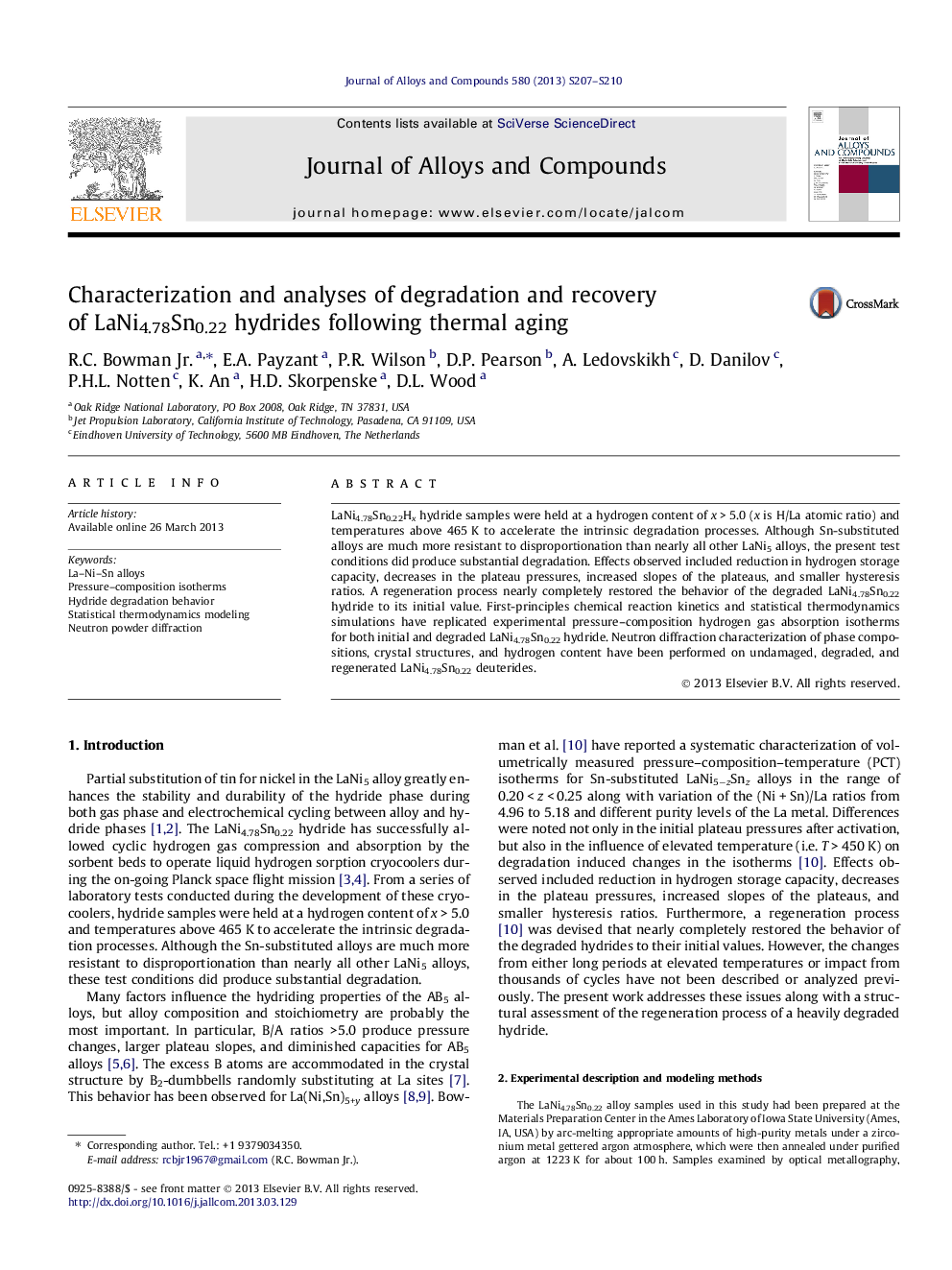| Article ID | Journal | Published Year | Pages | File Type |
|---|---|---|---|---|
| 1613401 | Journal of Alloys and Compounds | 2013 | 4 Pages |
•Aging at elevated temperatures degrade hydrogen capacities and isotherms for La–Ni–Sn hydride.•Isotherms of activated and degraded hydrides successfully simulated by statistical thermodynamics models.•Phase compositions and crystal structures of activated, degraded, and regenerated hydrides determined by neutron diffraction.
LaNi4.78Sn0.22Hx hydride samples were held at a hydrogen content of x > 5.0 (x is H/La atomic ratio) and temperatures above 465 K to accelerate the intrinsic degradation processes. Although Sn-substituted alloys are much more resistant to disproportionation than nearly all other LaNi5 alloys, the present test conditions did produce substantial degradation. Effects observed included reduction in hydrogen storage capacity, decreases in the plateau pressures, increased slopes of the plateaus, and smaller hysteresis ratios. A regeneration process nearly completely restored the behavior of the degraded LaNi4.78Sn0.22 hydride to its initial value. First-principles chemical reaction kinetics and statistical thermodynamics simulations have replicated experimental pressure–composition hydrogen gas absorption isotherms for both initial and degraded LaNi4.78Sn0.22 hydride. Neutron diffraction characterization of phase compositions, crystal structures, and hydrogen content have been performed on undamaged, degraded, and regenerated LaNi4.78Sn0.22 deuterides.
